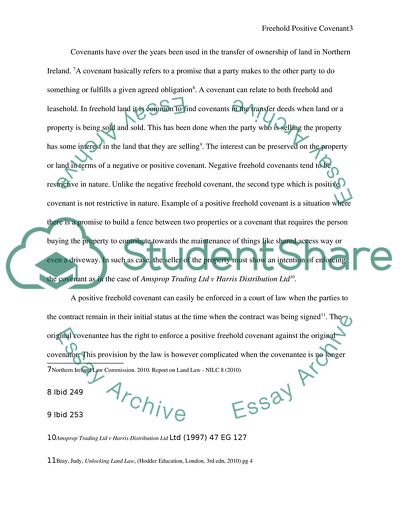Cite this document
(Freehold Positive Covenants: An Archaic Concept Case Study, n.d.)
Freehold Positive Covenants: An Archaic Concept Case Study. https://studentshare.org/law/1835569-land-lawwith-reference-to-relevant-northern-ireland-case-law-and-academic-authority-ie-journal-articles-provide-analysis-of-the-following-statementfreehold-positive-covenants-are-an-archaic-concept-there-is-little-that-a-fee-simple-owner-cann
Freehold Positive Covenants: An Archaic Concept Case Study. https://studentshare.org/law/1835569-land-lawwith-reference-to-relevant-northern-ireland-case-law-and-academic-authority-ie-journal-articles-provide-analysis-of-the-following-statementfreehold-positive-covenants-are-an-archaic-concept-there-is-little-that-a-fee-simple-owner-cann
(Freehold Positive Covenants: An Archaic Concept Case Study)
Freehold Positive Covenants: An Archaic Concept Case Study. https://studentshare.org/law/1835569-land-lawwith-reference-to-relevant-northern-ireland-case-law-and-academic-authority-ie-journal-articles-provide-analysis-of-the-following-statementfreehold-positive-covenants-are-an-archaic-concept-there-is-little-that-a-fee-simple-owner-cann.
Freehold Positive Covenants: An Archaic Concept Case Study. https://studentshare.org/law/1835569-land-lawwith-reference-to-relevant-northern-ireland-case-law-and-academic-authority-ie-journal-articles-provide-analysis-of-the-following-statementfreehold-positive-covenants-are-an-archaic-concept-there-is-little-that-a-fee-simple-owner-cann.
“Freehold Positive Covenants: An Archaic Concept Case Study”. https://studentshare.org/law/1835569-land-lawwith-reference-to-relevant-northern-ireland-case-law-and-academic-authority-ie-journal-articles-provide-analysis-of-the-following-statementfreehold-positive-covenants-are-an-archaic-concept-there-is-little-that-a-fee-simple-owner-cann.


